-
Posts
4,741 -
Joined
-
Last visited
-
Days Won
119
Content Type
Profiles
Forums
Resource Library
Events
Gallery
Blogs
Store
Community Map
Posts posted by Mayner
-
-
On 11/3/2024 at 4:36 AM, Ironroad said:
That's a little unfair. Accountants are not engineers and if involved in the costing process can only take the information provided to them by engineers at face value. Sometimes in the course of competitive tendering it is engineers on the sales side that take an overly optimistic view on quantities etc.
The situation described by John would indicate to me that, yes, as should be the case the accountants were raising the alarm when actual costs were exceeding the estimates. I've seen this happen. Hopefully there were no other issues and the contingency factor, (that should be a part of every building/engineering proposal) provided sufficient cover, albeit of poor consolation.
In commercial construction an Estimator or a Senior Quantity Surveyor will prepare costings (and appoint contractors) for a project in consultation with members of the senior management team who are usually of an Engineering or Construction Management background rather that working is separate silos.
Part of the problem may have been a reluctance by managers from an Engineering or Construction background to question the assumption of an Estimator or Quantity Surveyor (member of a separate professional body)
As a Site Manager or Foreman I only got involved after a successful bid, my role was identifying issues and risks at an early stage including questioning design, estimating and final assumptions. At organisational level there tended to be two responses either to work through the issues or pretend they did not exist. I tended to jump ship quickly with the latter kind of organisation, staying around was not worth the hassle.
-
 2
2
-
-
6 hours ago, Galteemore said:
Interesting - a professional model maker on the Big Island has discovered Irish railways. His output is top notch - will be interesting to follow: https://paxton-road.blogspot.com/2024/03/irish-vans.html?m=1
Interesting there is an old saying that there is nothing new in the World, James Hilton's blog is largely a repeat of work published in UK magazines during the 80s and 90s by David Malone a UK based Irish P4 modeller who used the Parkside BR Van as a basis for the CIE H Van and GNR Bagged Cement Wagon. David's wagons were assembled to P4 standards which involved significant modifications to chassis and running gear.
David mixed & matched the Parkside BR van body with a Ratio GWR underframe to model the distinctive GNR 16T Bagged Cement Van
The H Van (early versions) used Parkside sides and roof with scratchbuilt ends and Irish single lever brake gear.
His ModelRail Digest article on Irish Goods Wagons included examples of scratchbuilt wagons including a Bulleid Open and a 20T Brake
-
 8
8
-
 1
1
-
 1
1
-
-
The Momod train had quite a following among the UK Garden Railway fraternity.
Should be able to download the instructions
http://www.eagleassist.com/hglw/Mamod Handbook.pdf
-
 1
1
-
 1
1
-
-
On 28/2/2024 at 3:15 AM, Mike 84C said:
British engineering ; run by ??? oh yes accountants.

Not just Britain but prevalent 'as value engineering" (skimping) at an international level in construction.
Senior management began to panic that I was using substantially more stone fill than they had estimated on the Masonite Ireland project in County Leitrim during the mid 1990s. In commercial construction the Contractor buys stone fill by from the supplier by the Tonne and is paid by the Main Contractor or Client by the Cubic Meter.
When the panic set in our engineers were instructed to (physically) check and re-check the volume used and kept coming up with the same answer in Cu/M which did not tally with the tonnage used, until I pointed out that the density of the stone supplied from the Roadstone Boyle Quarry average 2.5T/m³ well above the theoretical 1.6T/m³ used in the estimation text books. We had a similar panic while working for the same firm on a Dublin project and decided it was time to move to a firm with a more practical pragmatic management culture.
Moving to my first job in New Zealand I spent my first day laughing at the level of skimping on an Auckland Apartment project which made engineering design on Irish and UK projects of the 2000s era look extremely high cost and conservative (cautious) in comparison.
I quickly made two decisions (1) not to buy a post 1970s home because of the high risk of defects (2) to get our of construction or work on my own account due to the hassle working for the larger companies in the industry, a decision that me basically took me through to retirement without too much hassle
-
 2
2
-
 1
1
-
-
9 minutes ago, DERAILED said:
The smiling guy looks remarkably like a developer and would be FF politician I once worked for

No interest in trains that I know of, specialty was financing hotels and apartments through BES (legal money laundering), but lost a lot of his empire (fortune) through paying inflated prices for development land before the GFC, but managed to claw a lot back when the dust eventually settled.
-
52 minutes ago, Noel said:
Could the large old MGWR station complex in Athlone (ie disused now west of the river) one day be used to house a national transport Museum (ie with good rail access to Dublin and eventually in the future to NI via the planned reopening to Mullingar (aka the strategic all island rail review)? . . . and perhaps even be a maintenance and operating home for operating RPSI stock based in ROI. There was a lot of track and space there not so long ago. Large array of sheds and platforms, etc.
Probably best ask Mary O'Rourke or her sons who should be well able to pull the strings prominent local family. https://en.wikipedia.org/wiki/Mary_O'Rourke
As Minister of Transport Mary was vehemently opposed to the 1990s proposal for a National Railway Museum at Mullingar which had a business plan, IE, RPSI & ITG backing and campaigned for the museum to be located in Athlone, then all went very quiet after the Mullingar scheme got the axe.
Main issue with Athlone is the large loco depot at the West end of the yard was demolished and cleared track lifted many years ago, Goods Shed and Old Loco depot different sides of the main running roads and small for modern use.
Don't ask about the cost of installing and maintaining a connection from either the Old Loco depot or the Down Yard to the main running lines, the Great Southern Railway Preservation Societies and Westrail lost their mainline connections and ended up with stock stranded when Irish Rail disconnected the loco yards at Mallow and Tuam from the main line.
-
 1
1
-
-
19 hours ago, minister_for_hardship said:
On today's "someone should do something" news, Blenderville is brought up at a council meeting...
Whatever way you look at it Kerry County Council have saddled the ratepayers with a huge on going liability with the railway. The TDs and Councillors who made the decision to support the building of the railway have evaded responsibility for poor decision making and failure in the upkeep of the railway.
A commercial operator would expect the Council to cover the cost of restoring and maintaining the railway and its stock, and provide a PSO style grant to meet the difference between fare income and operating costs (including a management fee).
Obtaining adequate insurance to indemnify the Council against future liabilities arising from the railway would be a major hurdle to the council leasing or selling the railway to an enthusiast group.
Irish Insurers are wary about insuring railway undertakings, CIE/IR self insures, the Waterford and Suir Valley used a UK insurer unable to obtain suitable insurance in Ireland, I
The Council operating the railway with paid staff (possibly employment training scheme) with volunteer assistance would probably be the cheapest/most economic option, with 'tourist businesses" that benefit from the railway paying a 'targeted rate". Back in the day local ratepayers guaranteed a 5% return on Tralee and Dingle shares and were required to make good operating losses, eventually the Council took over management of the old railway when it failed to make a profit, but the ratepayers were required to pay the dividend until the Free State government bought out the shareholders of the "Guaranteed Lines".
Nothing really has changed in Ireland over 130 odd years, Investors come up with schemes that can never pay their way, politicians make bad decisions and the ordinary tax payer pays.
.
-
 1
1
-
-
As far as I recall Brian Fennell had TMD/SSM CIE J15, GNR S Class 4-4-0 (Black) GNR GG 0-6-0 a 3 Coach rake of SSM GNR Coaches (2 K15 Open+ 1 Brake end) Rake (5 coaches) SSM GSWR 6 wheel coaches GSR Maroon 1 assembled as a MGWR coach, Scratchbuilt -rake 10-15-Irish Standard Covered Wagons (GNR/MGWR) rake GSWR Cattle Wagons.
Brian also had a Bandon Tank scracthbuilt by Tim Cramer during the early 70s, Tim disposed of his 4mm collection through Southern Model Railways when he moved up to O Gauge.
All operated ran well at exhibitions, locos had Ultrascale Wheels and Mashima Motors, Wagons were scratchbuilt in plasticard ran on Jackson (brass) wheels on 28mm pin point axle (probably machined by Brian), all stock were fitted with Kadee No 36 couplers. Kadees were very reliable in operation with delayed un-coupling though shunting 14' GSWR cattle wagons cou;d be trick due to the short length of the wagons, I used ran my 14' GNR cattle wagons in pairs with 3 link coupling at one end Kadee at the other avoiding the accidental uncoupling problem when making up a train.
Another member had a 21mm gauge GN JT 2-4-2T a RTR model produced by the late Harry Connaughton a commercial model maker during the early 1970s

TMD J15 191 arriving with a cattle train at MRSI Exhibition Clontarf 2002.
With readily available TMD/SSM loco and carriage kits, none of us scratchbuilt the correct (ex) Midland locos or stock to run on the layout.
-
 3
3
-
-
On 6/1/2024 at 12:24 PM, GSR 800 said:
I've considered Rebuilt Bulleid light pacifics as also being a possible. British loading gauge + 18 ton axle load makes them suitable for all mainline work. (IIRC the loading gauge of the 400s made them unsuitable for the MGWR lines). With tender they were roughly the same length as the 800s. Still I'd imagine turntables would be the bigger gripe with them.
Standard 5MTs were great, but axle load is near 20 tons, so maybe the standard 4mt 4-6-0 or 2-6-0 would've been a better fit, or perhaps the standard moguls and 2-6-4 tanks. The 'Mickey Mouse' would've been ideal for branch line work but would've been overloaded (as the Woolwiches were) on heavier trains.
With a 'what if' Irish standardisation I think a tint of Bulleid would be great to give uniqueness rather than a copycat of british standardisation. If he had spent more time on standard locos instead of the turf burner we may have ended up with some very interesting designs.
In my early teens I dreamed up an Island railway system off the coast of Wicklow independently operated with GWR influence but linked to the CIE system (I had never heard of Thomas, Sodor at this stage!)
Modern main line steam locos had a definite GW influence, though there was a later Bulleid influence with an "Airsmoothed" 2-6-2 influenced by the DB Class 23 of the 50s, before going down a locally manufactured version of the NBL diesel hydraulics before a CIE takeover in the 70s. The Island had a heavy industry base including steel manufacture and shipbuilding.
Going back a tweeny weeny bit closer to reality during the 1940s CIE proposed "re-building" the Woolwich Moguls into 3 cylinder 4-6-0s combining a 400 Class Boiler, 800 Class chassis cylinders and motion and Woolwich driving wheels.
The end result would have looked reasonably close to an LMS "Patriot" 4-6-0 with small wheels and likely to have been a useful go-almost anywhere loco combining proven, boiler, running gear and wheels, its possible a 6'7" version would have been built to bring the various 400 Class subclasses into line.
Like the Bulleid Pacifics the 3 cylinder layout of the 'rebuilt' Woolwiches would have been easier on the track that 2 cylinder locos like the Woolwich or 400s, could have been used on the Midland, Mallow to Tralee and possibly Rosslare-Cork useful locos.
The Patriot would be a close enough model in general outline, though the tender would probably been more modern in design, though Inchacore just might have kept the existing Woolwich tenders which were basically a Midland/early LMS design.
Proposed 372 Class 4-6-0 1945
-
 3
3
-
 2
2
-
-
10 hours ago, Gabhal Luimnigh said:
Lovely working environment there lad.

We more or less bought the place on gut instinct after a day visiting Open Home. Climate is a bit like the West of Ireland bit warmer without the snow, Spring tends to be dry, get lashed by gales (tail end of tropical Cyclones) during high Summer (Jan-Feb)
Unfortunately little time to play trains as a result of family commitments these days, though I did manage to tidy up the workbench to complete some unfinished projects and finish a (dead) tree felling/chipping exercise that will leave me with mulch for the garden next Spring (Sep-Nov)
Inside what was originally intended to be Wifes arts studio, I need to set up steel racking down the centre for more boxes of stuff from inside the house.
Grass had grown about 4" since mowed 2 weeks ago, the Waikato is good cattle rearing country, not great for cropping.
Small workshop the curse of finding storage space for electric/battery garden power tools
Not a good idea for using the workshop for 3D Resin Printing challenging to maintain temperature and humidity at adequate levels for successful 3D printing +25ºC 45%RH despite room heater and de-humidifier. Flame proof electrical and ventilation (Intrinsically Safe) system required using and post print cleaning of solvent based resins. (Large volumes of IPO used as a clean up agent.)
Railway room/workshop, baseboards and backscene for 'permanent' layout set up 10 years ago, used mainly for storage!
Cleared the workbench for the 1st time since May 2023. Need to finish the ex-MGWR 2-4-0 for a customer and a J15 for myself, which should help keep me occupied for a few months.
-
 5
5
-
-
I went through a shed building phase about 5 years ago, the idea was to free up space in the house and my model railway room/workshop, but ended up even more clutter
Original plans were to build a 'modern" contemporary design of buildings but ended up buying proprietary sheds because of the lower cost.
Went for timber piled foundations on our largest building the traditional house foundation in this part of the World.
Piles installed the heavy duty polythene is to prevent air-borne moisture rising through the building, a standard detail for this form of construction.
Treated joists laid on treated 4X3 bearers, this building was intended to carry a heavy load! mainly storage.
We installed a proprietary 'undeflooor' insulation before fixing the flooring (Joists and Flooring was supplied as a kit with the shed.
The other shed was built off an existing concrete slab. I again used plastic as a damp proof membrane laying the bearers on bricks with felt damproof course between timber and the bricks.
Used expanded 50mm polystyrene insulation in walls and ceilings lined with ply.
Shed waiting treatment with cedar oil, we went for a shingle roof for its rustic appearance.
Five years on I have not quite completed our 100 year old garage into a railway room, I still have to replace the current roller shutter with a set of1920s style garage doors. It was re-roofed a couple of years ago potentially good for another 20-30 years.
The outdoor work area does not get much use, I still have to finish repairs to the large scale loco shed.
The Surprise-----play house re-located to an out-of the way position during the 1st Covid lock down.
The top provides useful (long term storage) or large scale model railway stuff.
I need to add a timber rack to the bottom section, lseeon you cannot have too much storage.
-
 6
6
-
-
Interesting in confusing the Macroom de-railment and Muskerry train/steam roller 'race"
Loose-coupled goods breaking apart (broken coupler or broken wagon axle) and the driver not realising that anything was wrong were failrly common.
There was a newspaper (Indo) article on a wagon on a Mayo-Line goods breaking and wagons piling up behind it at Ballyhaunis, the driver did not realise anything was wrong until the Signalman at Claremorris asked what happened to the remainder of his train.
The last Kingsbridge-Tralee Goods (1978) broke apart and ran back into the station when a coupler failed as the train climbed the Gullet. Hopefully the guard jumped off when he realised the train was running back, the wagons would have piled up over and around the van when it hit the buffers at Heuston Station
-
 1
1
-
-
One of the most interesting aspects of the Cross-Border closures was that CIEs losses increased significantly after the UTA closed the Derry Road and the overnight Derry Vacuum routed to run via Antrim with a motive power change at Lisburn.
Presumably UTA freight rates Dundalk-Strabane-Derry did not cover operating costs, UTA/CIE must have been able to negotiate more realistic rates when it took over Dundalk-Belfast freight operations and NIR haulage agreement for CIE freights between Lisburn & Derry Waterside.
The other oddity was that the SLNCR was dependant on grants from Stormont rather than the Free State/Republic to remain in operation since the 1920s which fitted the agenda of certain 'hard line' Unionist politicians that the money being poured into railways in West Ulster were greater benefit to the 26 Counties than Northern Ireland
-
 1
1
-
-
3 hours ago, David Holman said:
Shades of the Triang Big Big train - battery powered on plastic 0 gauge track. Got a set back in my class teacher days and my Year 6 pupils and I had a lot of fun building a model village around it. Before the National Curriculum came in, of course, when we could do pretty much what we pleased. Happy days!
Is the Prairie Rocket O or G Gauge? Nice model by any standards either for kids or so called scale modellers.
Remember the publicity around the Big-Big Train adds on prime time TV for a kids train set and the local (hire-purchase)furniture/bicycle store stocking it, years later bought and re-painted the Ruston Diesel and narrow gauge V tipper trucks which were quite good models. The BR mineral wagon chassis ended up under a MGWR Convertible, Ranks Grain and a Guinness 3 container wagon!
We went non-main stream with Warldorf for our child's schooling rather than the local equivalent of the NC, bringing up resourceful individuals who work on their own initiative and are able to think for themselves.
-
Should be able to contact Alan by e-mail, we were recently in contact. alanorourke@hotmail.co.uk
Alan is an advocate for Irish Modelling in IRRS and Irish (BG) Stewart Historic Model Railway Society and has been involved in publishing Irish Railway modelling circulars and magazines for many years.
Certainly well work subscribing covers all levels of ability and includes models and layouts that have not been published on newsgroups like IRM or RM Web, some modellers prefer the printed media.
-
 3
3
-
 1
1
-
-
Interesting a British Toy company with a German Jewish refugee background around the time the founders of Bing Toys fled from Germany to escape persecution.
The Prairie Rocket loco and cars are reasonable looking models and appears to pre-date the Bachmann Big Haulier which is popular as both a toy and scale model.
I don't know if there is anything similar is available in Ireland or the UK our equivalent of Walmart used to sell a Chinese made G Gauge battery 'Wild West" Train set with additional track packs for under €60 which occasionally appears for a few Dollars in Charity shops or our equivalent of e-bay. The Train was a characture of an 'old time" American train but reliable and robust in nature and popular for modelling projects among the large scale modelling fraternity.
If the train set runs on G gauge or 45mm track Bachmann 'Big Haulier" trucks or bogies may be an option to replace the missing/damaged bogie, should be available through a Garden Railway shop in the UK or E-Bay postage from Bachmann spare department in the States would be expensive.
-
 2
2
-
 1
1
-
-
As a professional who worked in the industry for close to 50 years building (and sometimes troubleshooting) residential and commercial buildings in Ireland, the UK and New Zealand, I struggle to bite my lip and stay stum on this thread.
Using decent materials, correct detailing and decent maintenance a timber framed building can have an almost indifinite life span, like the timber frame buildings in parts of the UK and other parts of the world, incorrect detailing and inadequate maintenance basically rot away within years. Our own home in a conservation area 1920s California Bungalow timberframe weathboard construction corrugated iron roof just about 100 this year, older timber frame Villas from the Victorian era and timber frame houses built up to the 60s sought after in their own right or for relocation, more modern housing tends to be demolished and end up in landfill as developers go for intensification in established neighbourhoods.
The main drawback with the railway wagon/carriage as a home/railway room is that the originals wern't intended/designed to deal with the Irish/UK/New Zealand weather in the same manner as a conventional building and require almost constant maintenance/upkeep to remain weathertight and with plantation timber not rot away in a few years.
While a pastiche the 'railway carriage" with corrugated iron roof and veranda will last longer with lower maintenance levels than a traditional railway wagon/carriage roof constructed in roofing boards or ply covered in the traditional canvas or even a modern roofing membrane. Even modern roofing membranes (felt or plastic) are only guaranteed to 10-12 years, while you would want a decent shed to last at least 25 preferably a minimum of 50 years before replacement.
We built a scaled down NZ Railway shelter (not unlike GNR(I) for an outdoor store in our garden about 15 years ago, still the original acrylic (not oil) paint work still looks well no maintenance to speak off since built. Roof Corrugated Iron Mono-pitch with decent overhangs (300+mm), timber flashings and weatherboard all treated pine timber, on building wrap (not a vapour barrier) on 100X50 treated pine framing. Large doors were laminated in "Shadowclad" a treated Ply pre-primed Wall Cladding with V grooved to resemble T&G planking (but without the shrinkage problem) to a sheet of 19mm treated plywood, no sign of movement or shinkage since installed despite exposure to the prevailing wind and sun.
To sum up I'd build it differently using different materials, but would build a building that meets Building Code requirements in terms of durability and weathertightness than a replica railway wagon or carriage mainly in terms of building life and value for money, but that's my opinion. The SLNCR Van looks the part and I was impressed with the joinery work involved.
-
 4
4
-
-
Pairs of old diecast Triang/Hornby 6 wheel diesel bogie was Mike Coles (Q Kits fame) mainstay for his Class 4 Diesels on his OO Gauge outdoor Sundown and Sprawling one of the 1st "Modern Image" layout during the late 60s/70s. Locos featured scratchbuilt metal bodies included the Prototype Type 4 diesels and a Hoover possibly used as masters for his one piece Q Kit resin bodies when the Triang Brush Tyoe 2, English Electric Type 3, Diesle Shunter were the main reasonably priced British outline diesel locos available.
Went through a short phase of 'Modern Image BR modelling inspired by Monty Wells series of articles in the late 7o/80 but never built a layout, had a green Hornby 29 and a second hand 37 with the original power bogie 'superdetailed' with Craftsman split headcode boxes and nose doors possibly full yellow noses West Highland style not sure about the Scottie dog emblem, sold to concentrate on 21mm Irish steam era very slow progress over 40 years helped keep me out of the pub (every night)
-
 2
2
-
-
I though for a moment that Noel had modelled one of the Block Scrap Trains that were such a feature of CIE (Cork) Main Line operations during the 70s.
Although some are 'Stenciled" PWD and B and include a "Half Height" on a 20T Flat the train was used to transport scrap steel to Cobh or processing at then recently refurbished Irish Steel Plant on Haulboline Ireland. In the same era trains of 'scrap wagons" (often cars and appliances) were stored in the Yard at Kilbarry north of the Tunnel apparently waiting to be tripped to Cobh for unloading.
Noel row of locos reminds me a bit of the Inchacore Sound Barrier or more closely the long row of out of service locos 'used in a similar manner at Toton in the Midlands possibly including some 33s.
Looking back its difficult to imagine why the British Outline rtr modeller tolerated the single power bogie power drive for so long, Minitrix used properly engineered chassis with a centrally mounted motor driving both power bogies from at least the late 60s, Roco and Atlas followed suit in N scale during the 70-80 and Kato pioneered the twin flywheel drive with low friction bogies in N Gauge during the late 80s. Paddy Murphy apparently considered the option of twin bogie drive in commissioning his first 201 from Lima, but opted for the then standard single pancake drive based on the belief that Irish modellers were not prepared to pay the additional cost.
I never got round to a Murphy Models Class 33 repaint, though I sampled the Lima HO version which with the body raised with plasticard skirts was about the right length and shape for a C Class, the C Class did not last to long I used the HO Class 33 chassis to power a plasticard B121 and a Deltic (HO or possibly hybrid scale) to power a plasticard A Class. Bogies were about right length but less said about either body.
Returned to 4mm Irish Diesel modelling in the 90s using MIR Cast Metal Bodies on Athearn rtr Chassis or Atherarn drive on my own chassis to get something running quickly on the MRSI Loughrea layout, I have a collection of modern IRM/MM sound equipped diesels (OO & 21mm) but seldom if ever run them. Lot to be said for the old Lima and Athearn powered locos plenty of enjoyment in both modifying and running them that I don't get from something out of the box.
Noel the old Triang Caley coach is worth keeping and collecting (if you find some more )reasonably close in outline to some GSWR Rosslare stock than ran in the Black and Tan scheme, the Lima MK 1 is probably worth re-skinning or re-building into a BR Van until someone releases a decent rtr model, at least the underframe, bogie and roof are usable.
-
 3
3
-
-
2 hours ago, Patrick Davey said:
Sent you a PM John

No worries Patrick, it looks like I will be going ahead with this model and I am considering options for distribution in Ireland and UK.
At this stage I expect to have decorated samples ready mid-year and delivery late Autumn 2024 (Northern Hemisphere), days are already getting cooler and shorter in this part of the World as autumn approaches.

-
 1
1
-
 1
1
-
-
Might be cheaper than buying a new printer to ask Steve Bell (Railtec) eghamrails@hotmail.com or PM on RM Web if he can help.
There is a set up cost if he has nothing suitable available, but service is 1st Class.
-
 1
1
-
-
First heard of the potential for 3D modelling and printing in a lecture from Neil Ward (a leader in the field) at a NZ Model Railway conference about 18 years ago https://nwmodelworks.com/449737396
I have been commercially producing 4mm Scale of Irish Wagons since 2021.
While I am an experienced designer it was necessary to outsource the 3D modelling (3D CAD work) on our first models to a Freelance Designer at similar cost to designing a model for plastic injection moulding, like other smaller manufacturers I have outsourced 3D Printing to a Far Eastern print shop for similar reason to conventional manufacturers outsource their manufacture to China, they are the only ones who can compete on price, quality, delivery and customer service.
While there is a lot of talk about printing on a Home Printer the commonly available 'reasonably" priced desktop printers are not really up to it for consistent repetitive printing of 3D models and I don't have €80-100K available to invest in installing a full-size printer capable of printing in the resilient resins necessary for use in railway rolling stock manufacture.
At this stage I am not convinced that its feasible or desirable to produce a 4mm model of a large slender vehicle like a coach or railcar in resin, but the prospects for 7mm and larger scale modellers are more promising.
The FDM (fusion deposition modelling) is a better option than Resin Printing for 7mm and larger scale models provides more consistent results and less shrinkage. Woko's RM Web workbench is a good example of what can be achieved in 7mm https://www.rmweb.co.uk/forums/topic/172854-wokos-bench/page/6/#comment-5213980
Neil Ward has produced 9mm Scale (New Zealand 3'6" gauge on O Gauge Track) diesel locomotives mechanisms which include printed metal parts including bogie frames, and transmission parts. The Waikato Bridge and the large English Electric loco on the Hamilton to Claudelands Layout were build using 3D printer parts designed and manufactured by NW Model Works.
I may produce 7mm or larger scale models at some stage in the future, but currently do not have the time as a result of family committments.
I would not be too worried about a 3D Print Bureau producing unauthorised copies of someones work, like print and photo bureau the better ones have a reputation to protect and because of the difficulty printing small scale models and high reject rate its simply not worth the hassle of trying to print multiple copies. My original NZ based supplier has refused to print further models because of this very problem, small scale models are simply not worth the hassle for a supplier who is involved in more lucrative work.
-
 1
1
-
-
1 hour ago, raymurph said:
What would the cost be delivered to rep. of Ireland?
Our minimal postage work out at $30NZ or €17.50 Tracked and Traced to Ireland.
Model cost likely to be €45.00 at current exchange rates.
There is nothing to stop a group of members clubbing together to buy several (or my minimum batch of 50) and share reduced postal cost and take care of import Vat on arrival.
I am also looking at UK manufacture & assembly as an option, but may not work our any cheaper than the present arrangement.
-
 2
2
-
-
7 hours ago, jhb171achill said:15 hours ago, Bóithre Iarainn said:
Fantastic stuff Jonathan, thank you for going to the trouble of getting this for me! Do you know why the Asahi liner ran via Mullingar instead of Portarlington for a time? Was it simply a lack of capacity on the latter route?
Thanks again Mayner! Do you know if Moate station was open for passengers by that stage or did it shut in 1973? The closure date given in various places online is May 1987, but I can't imagine there were many passengers alighting from one train on Sundays or the late night mail trains.
The Asahi probably ran via Mullingar as a result of difficulty finding a path between Portarlington and Island Bridge Junction when the line was busy with up passenger trains arriving from the provinces. IE routed the Foynes-Ballina Oil/Coal Trains via Nenagh rather tan via Limerick Junction for similar reasons when the Limerick-Claremorris line was out of use during the mid 1990s.
IE replaced the 4w flat wagons used for carrying Hazardous Freight on the Asahi line with Bogie Wagons at some stage before the factory closed in 1997. The ending of Mail Trains and Sundries Traffic would have released bogie wagons for use on the Asah
-
 1
1
-
.png.c363cdf5c3fb7955cd92a55eb6dbbae0.png)

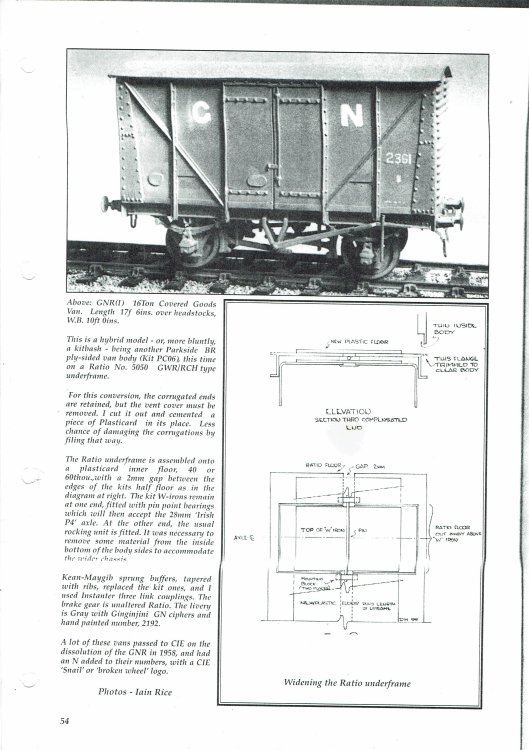
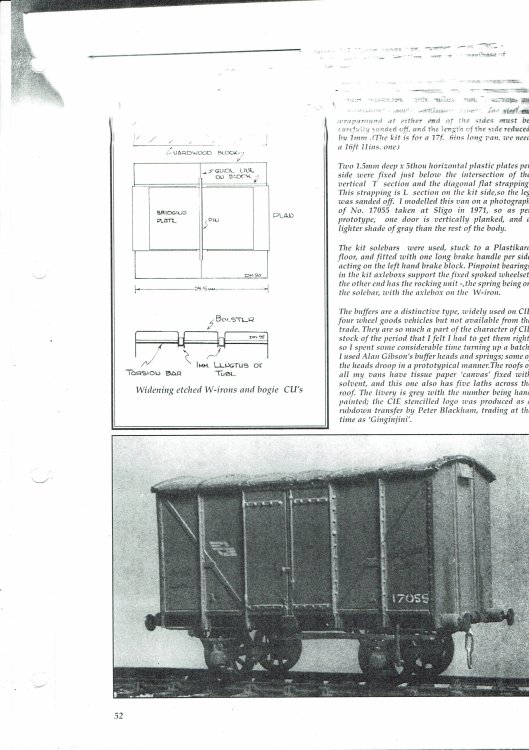

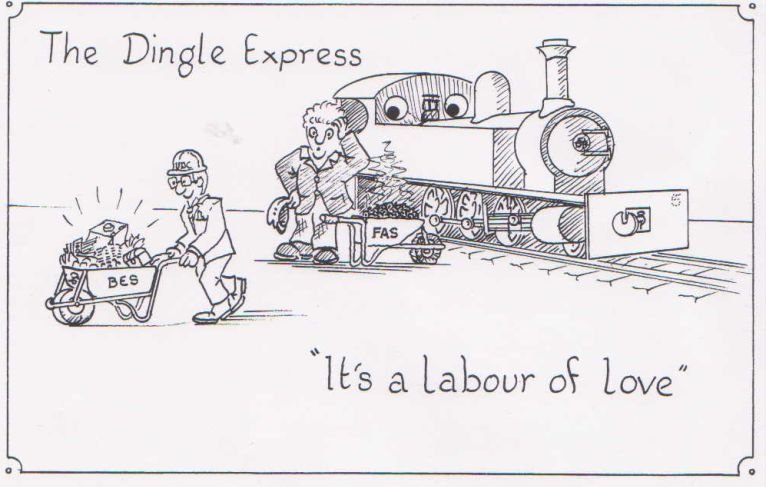
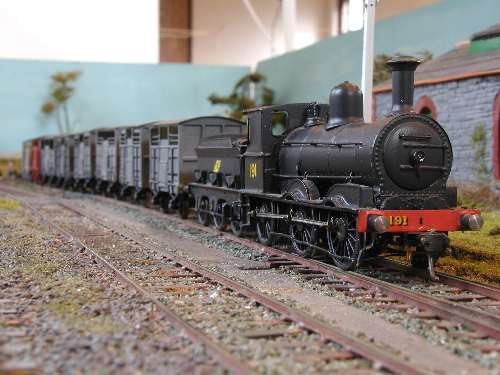
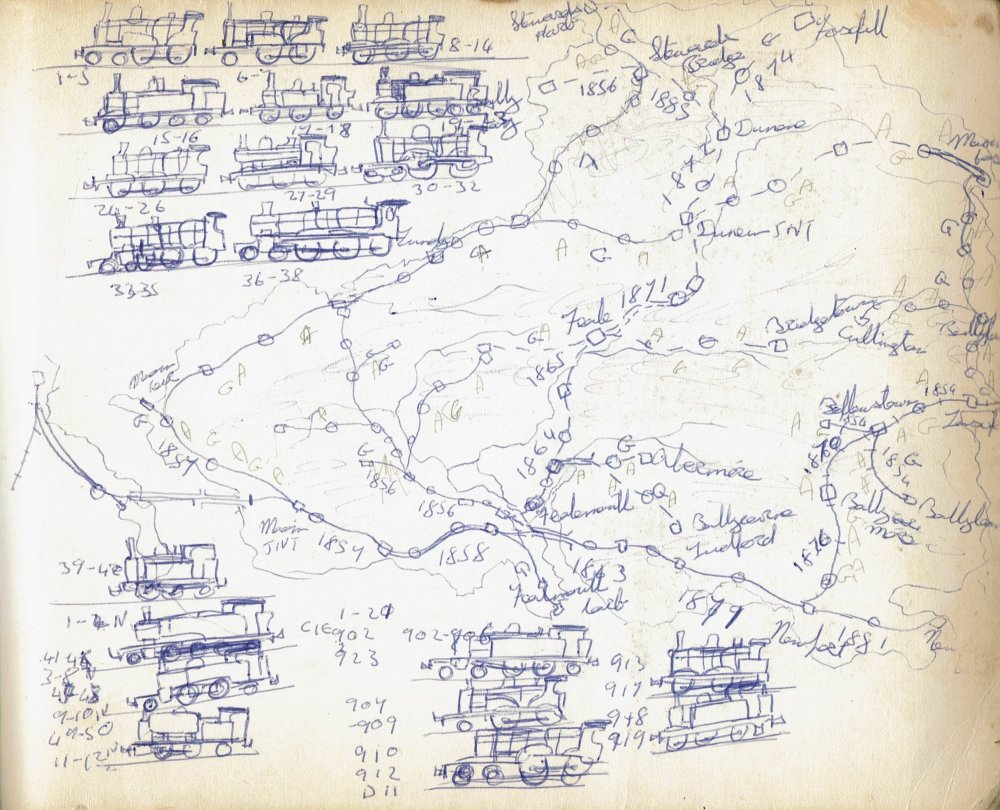
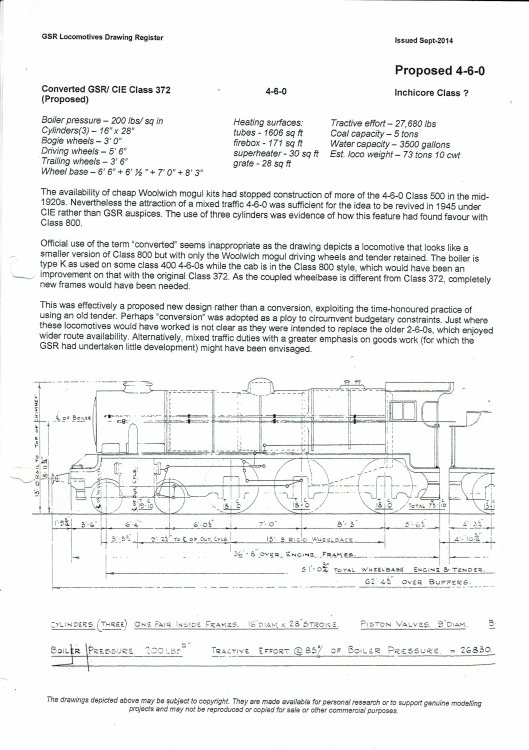

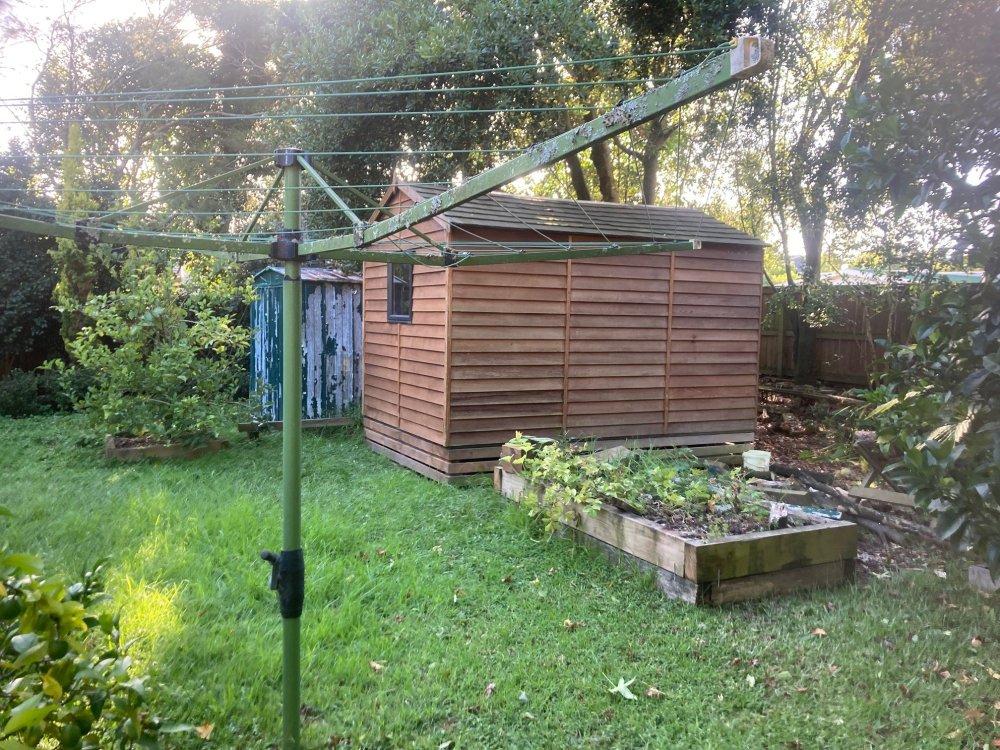
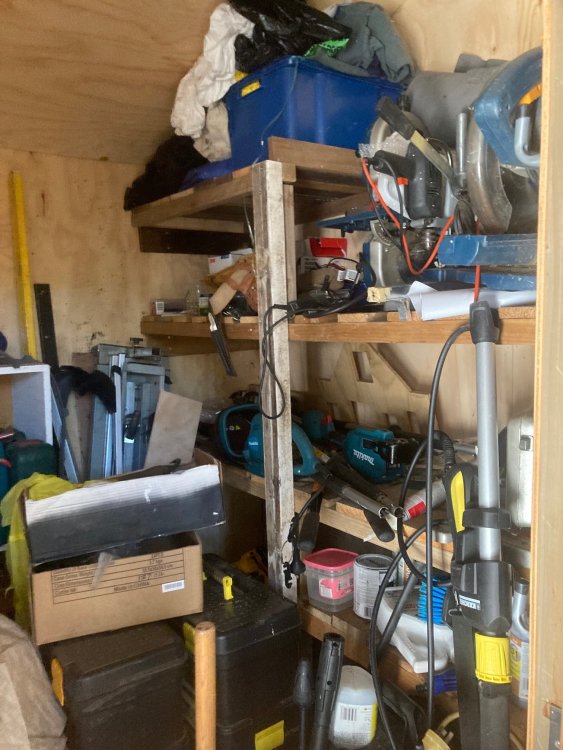
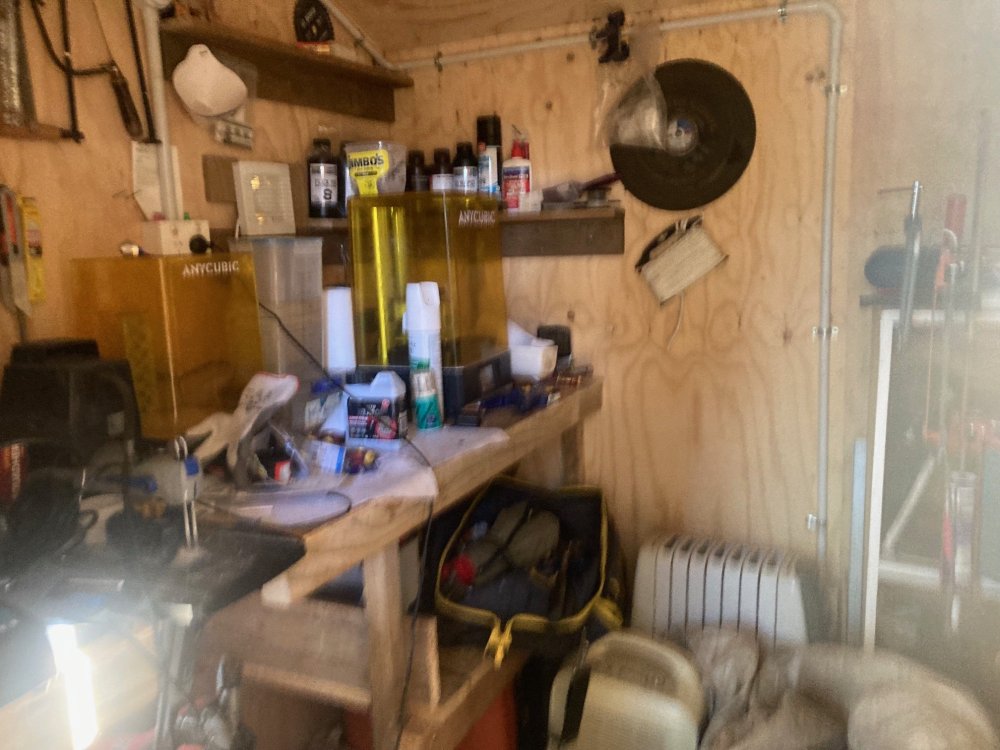
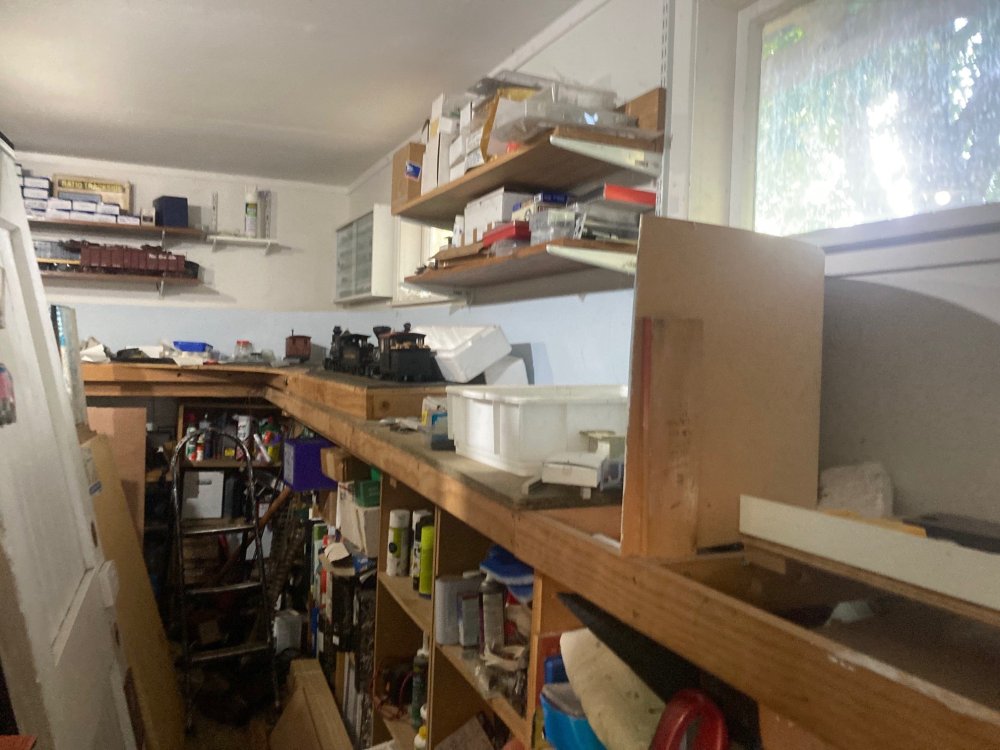
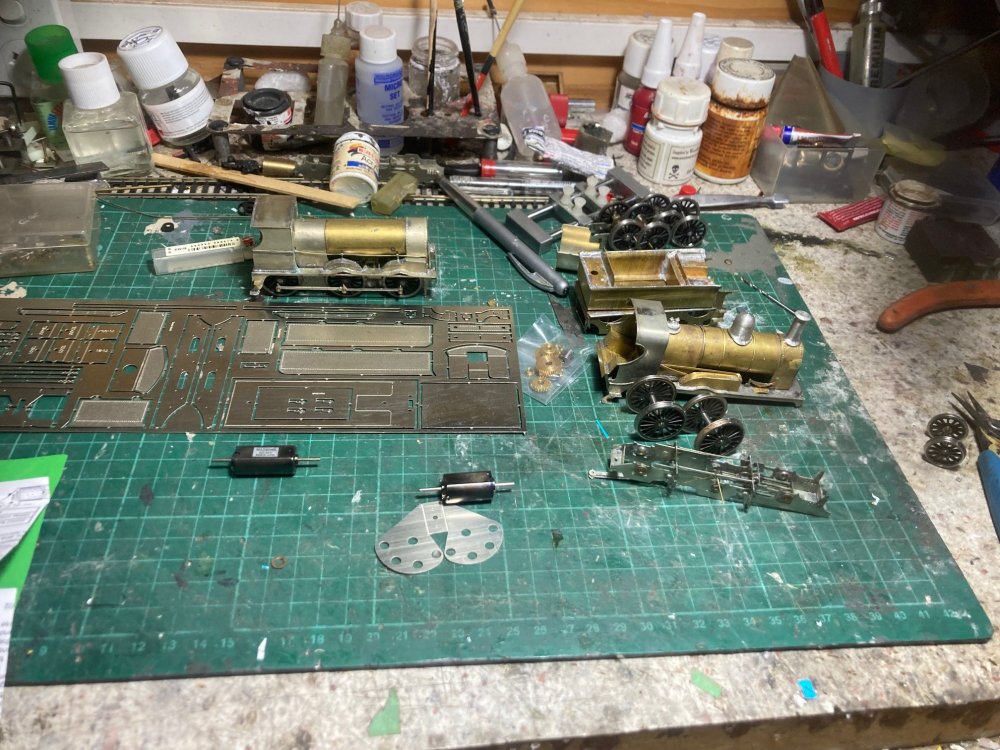
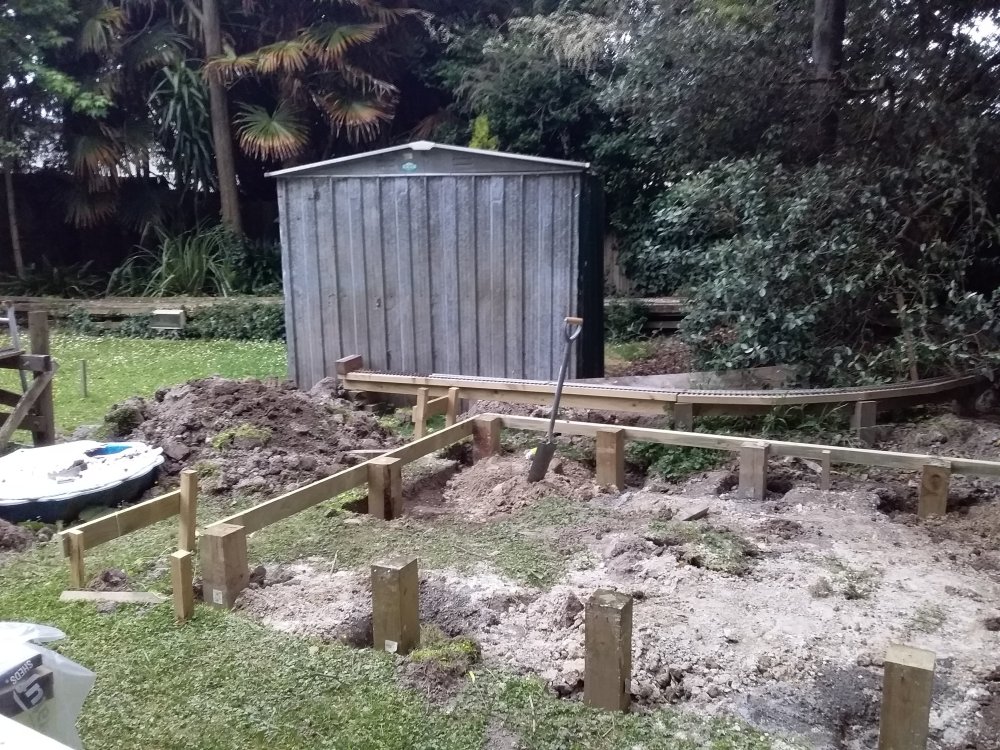

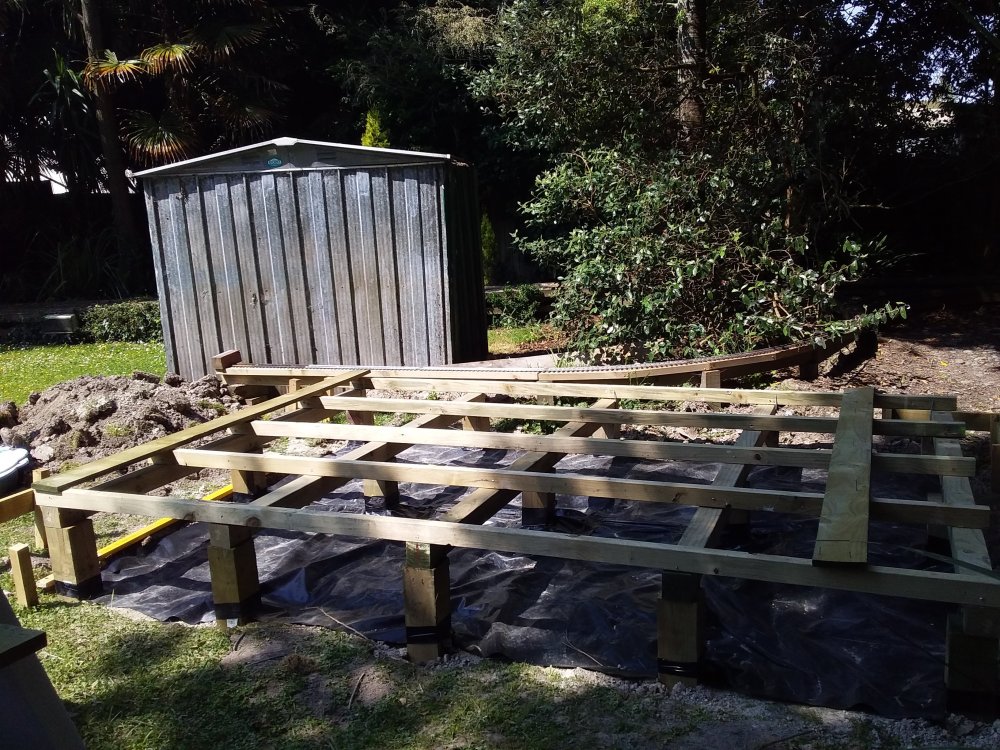
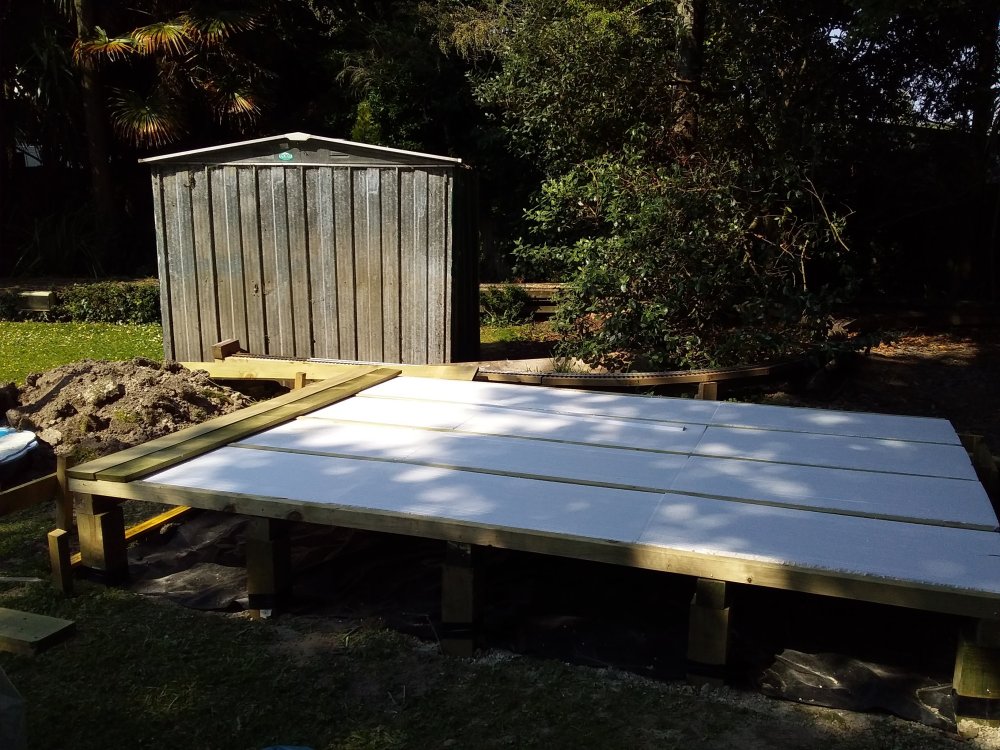
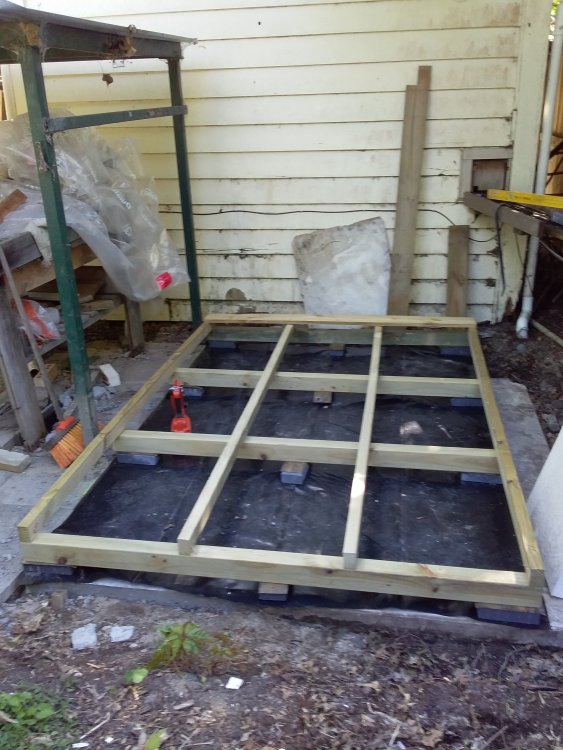
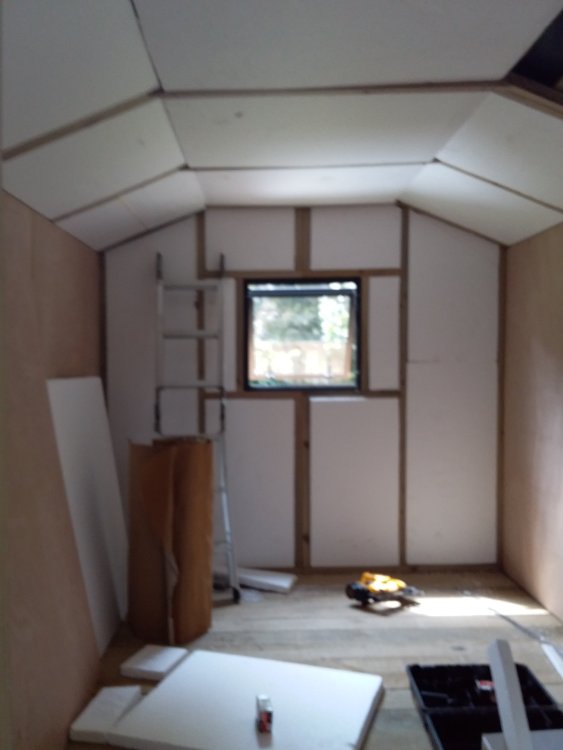
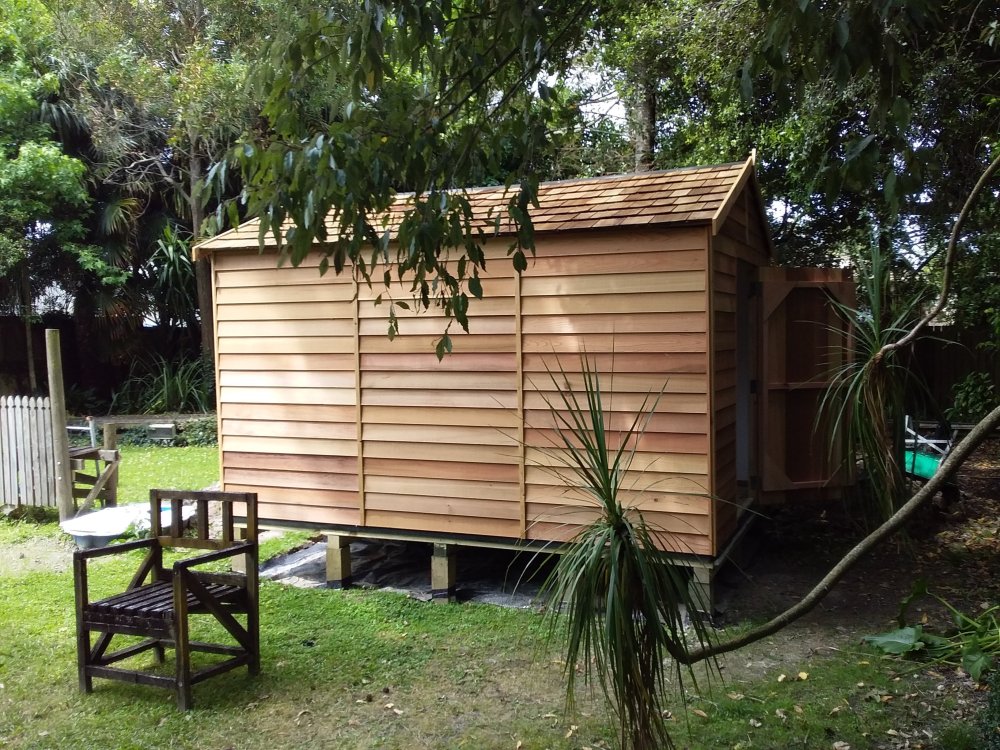
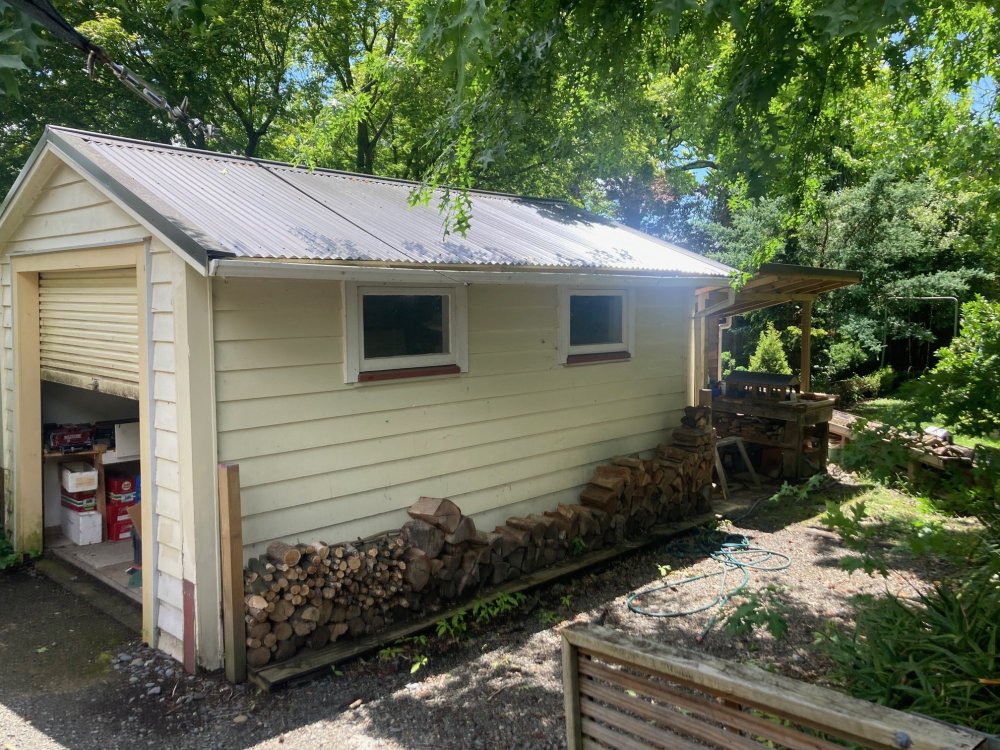
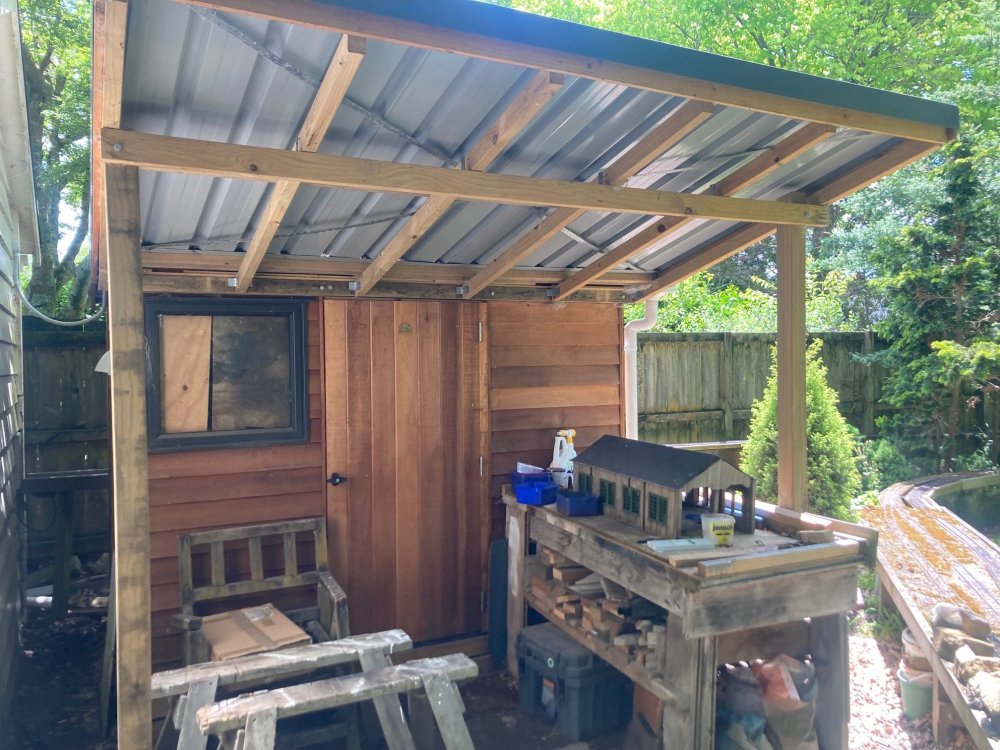
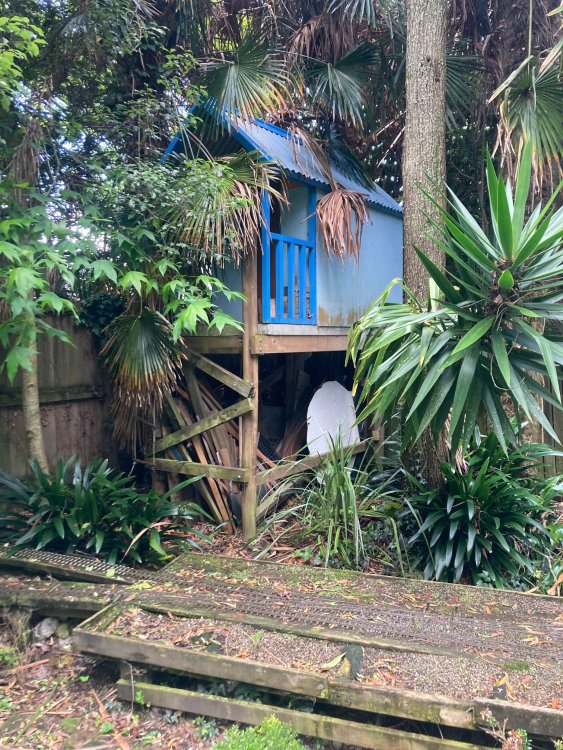
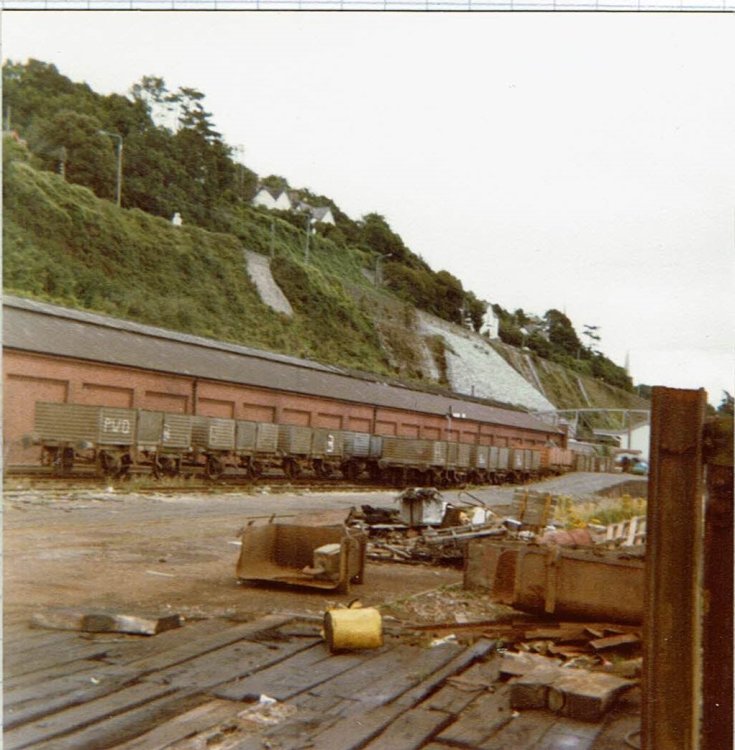
Production Complete - A First Look At Our Bulleid Open Wagons
in News
Posted · Edited by Mayner
Steelwork spray painted red-oxide to prevent rust, galvanised steel body left unpainted when when wagons overhauled for beet traffic mid-70s
Wagon dumped out of service at Liffey Junction 83-4 had been used as spoil wagons on the DART project for several years.